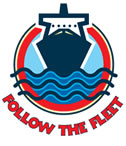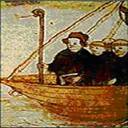|
Famous Irish Sailors |
||||||||||||||||||||||
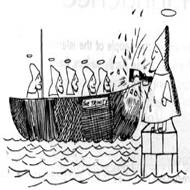 |
|||||||||||||||||||||||
| Little is known about St. Brendan’s early life. He was born at Annagh, near Tralee, in 484. In the year 512 he was ordained by Bishop Saint Erc. Eventually he established his own monastic settlement on the side of Mount Brandan, the famous Kerry mountain which is associated with his name. His love for the sea was strong and his skill with the coracle was well-known. On hearing from his good friend St. Finbarr of a wonderful island of peace and happiness Brendan resolved to search for it. The first voyage of St. Brendan took him northwards to the Hebrides, Faroes, Shetlands and probably to Iceland. The first voyage of St. Brendan took five years but he failed to find his dream island of Hy Brasail or Isle of the Blessed, and he resolved to make a further effort to discover it. |
|||||||||||||||||||||||
|
|||||||||||||||||||||||
| He died on 16th May 577 at the age of 93 and his body was buried at Clonfert, the great school he had founded and which remained a fitting monument to his monastic work. St. Brendan wrote a manuscript Navigatio Sancti Brendani Abbatis. In this, he says that he made a voyage to the Promised Land. Some people think that this means North America. He apparently did this by sailing on a stepping stone process reaching Newfoundland via Faroe Islands, Iceland and Greenland. Brendan established several monasteries. Clonfert is the most famous of them. He died at Annaghdown probably while visiting his sister Briga, who was abbess of a convent there. |
|||||||||||||||||||||||
 |
|||||||||||||||||||||||
| Did you know? | |||||||||||||||||||||||
|
|||||||||||||||||||||||
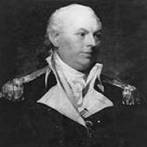 |
|||||||||||||||||||||||
Commodore John Barry is a famous Irishman of naval legend, who made a name for himself in the American Revolution. John Barry was born in Tacumshane, Co. Wexford in 1745. His father was a poor tenant farmer and their landlord evicted his family, they were then forced to move to the village of Rosslare. This was where John developed his love for the sea. His uncle was a captain of a fishing skiff and John wanted to follow in his footsteps. In 1760 he emigrated to America and settled in Philadelphia, Pennsylvania. Back in Ireland, he had started out working as a ship’s cabin boy and, just a few years before his death, he had become the commander of the entire United States fleet. His war successes are incomparable: he was the first to conquer a British war ship on the high seas. He captured two British vessels after being badly injured in a sea battle. In total, he captured over 20 ships. He wrote a Signal Book which introduced ‘A set of signals used for effective communication between ships’ and he fought in the last maritime battle of the American Revolution in 1783. In 1794 the President elected him Senior Captain of the Federal Navy. To his contemporaries Barry was known as Father of the American Navy. He died in 1803.
|
|||||||||||||||||||||||
 |
|||||||||||||||||||||||
| Did you know? | |||||||||||||||||||||||
|
|||||||||||||||||||||||
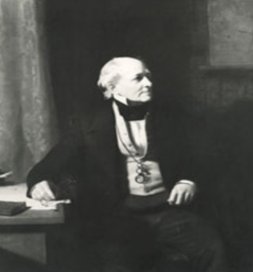 |
|||||||||||||||||||||||
Francis Beaufort known for inventing the Wind Force Scale was born in 1774, in County Meath. His father was the Rector of Navan. Francis was virtually self educated. He left school when he was thirteen and began his sea career by joining the British Navy in 1787. He won admiration and promotion for his conduct in the French Wars. By the age of twenty-two he had progressed to being a lieutenant. He never returned to sea duty again. He became the Hydrographer for the Admiralty in 1829 and he planned many hydrographic studies for British expeditions. When he died in 1857 he was still in the British Navy. Find out about the Wind Force Scale in the Weather section on this site.
|
|||||||||||||||||||||||
 |
|||||||||||||||||||||||
| Did you know? | |||||||||||||||||||||||
|
|||||||||||||||||||||||
